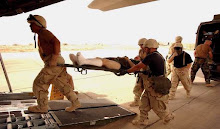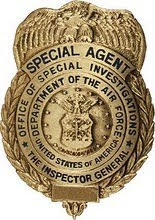By Steve Hammons
(As a freelance, independent journalist, I was issued media/press credentials by Open Minds Production of Tempe, Arizona, to cover this fascinating conference. My thanks to Open Minds Production and Maureen Elsberry.)
The audience at the 24th annual
International UFO Congress Convention & Film Festival near
Scottsdale, Arizona, heard some fascinating presentations that were at times
both hopeful and frightening.
From ancient accounts in Native American lore to ongoing scientific
developments, speakers explored many aspects of research about UFOs.
Sensitive U.S. military bases like Wright-Patterson Air Force base in
southwestern Ohio and Area 51 in southern Nevada have played key roles
associated with this challenging situation, according to presentations at the
conference.
The Rendlesham Forest incident at a U.S. air base in the UK and UFO crashes
around the U.S.-Mexican border were also discussed. Cattle mutilations and
human abductions, including group abductions, were examined as well.
While some speakers perceived
alleged visitors as hostile and dangerous, others put forth accounts of
advanced and benevolent beings who want to help the human race survive and
develop.
In fact, we may be facing several
kinds of visitors that will require intelligence on our part to understand and
deal with, the audience was told.
The conference was sponsored by
Open Minds Production of Tempe, Arizona. Open Minds covers the UFO topic
through its investigators and journalists, website, and online radio and TV
programs. Additional Open Minds activities include networking with
other U.S. and international researchers and sponsoring the annual UFO
conference.
The five-day conference, film festival and related activities took place Feb. 18 – 22 at the Wa-Ko-Pa resort, east of Fountain Hills and Scottsdale, in the northeast metro Phoenix region.
INVESTIGATIVE JOURNALISM
Several speakers addressed the
national security and global security issues involved in this alleged
situation. Due to the nature of what has been discovered about UFOs and
visitors, operational security and secrecy of U.S. and international activities
have been very robust, according to some of the speakers.
No one knows this better than conference
guest Bob Lazar. The live, in-person interview of Lazar by award-winning
investigative TV journalist George Knapp of KLAS-TV in Las Vegas was one of the
many highlights of the conference.
Back in November 1989, after a
number of unique circumstances, Knapp interviewed Lazar for a news segment on
KLAS-TV. That is when the nation and the world began to learn about secret facilities in a remote desert location known as Area 51.
Lazar stated in that interview
that he had been working on a project involving saucer-shaped craft that did not
originate in the U.S. or any other nation on Earth.
At last week’s conference, Knapp
again questioned Lazar about his claims of working at a compartmented secure
site in 1988-89 that was within Area 51 but separate from the main air base at
Groom Lake.
Called S4, this facility included
multiple hangars carved into the side of a rocky desert hill and expertly
camouflaged, Lazar said. Inside the hangar bays were several craft, some
disc-shaped. Lazar was assigned to help analyze and back-engineer
components and systems of one of the saucers, he stated.
Lazar said he first thought these
were U.S.-made craft that explained the many UFO sightings over past decades.
However, upon examination of the craft and other information that came to his
attention, it became clear that the craft was not ours and was tremendously far
in advance of our technology at that time.
From the background information
provided by both Knapp and Lazar, and the straightforward way they presented
their stories to the audience, many in attendance seemed increasingly convinced
that Lazar’s accounts were true.
DEFENSE AND SECURITY
Former U.S. Air Force military
police officer John Burroughs spoke about the December 1980 incident in
Rendlesham Forest, UK. While on-duty at a U.S. air base nearby, he and other
USAF personnel (including the deputy base commander) encountered very unusual
unknown objects in the sky and on the ground.
Historian Richard Dolan told
conference attendees that advanced technologies and knowledge related to UFOs
have been obtained, but are closely held by a relatively small number of people.
Dolan advocated for the release
of more information about this situation. Though recognizing the need for
security and safety, he said he feels it is potentially dangerous for our
society and our democracy to keep such important information and technology secret.
He said he feels it is just a
matter of time until more information is put forward about the reality of
visitors from elsewhere and the situation is acknowledged and accepted more
widely.
James Clarkson explored the story
of June Crain, who reportedly worked at Wright-Patterson Air Force Base in the
1940s and was exposed to information about UFO research being done at the base.
Wright-Patterson in Dayton, Ohio,
has long been a center for aircraft research over the decades, particularly the
engineering and capabilities of the aircraft of our adversaries.
Mark Pilkington’s research has
included a close look at how elements of our defense and intelligence community
have dealt with the UFO phenomena, and how they may have leveraged it for
certain purposes. He told the audience there is much more than meets the eye
regarding the UFO situation. It may be much more complex than many of us
realize, he said.
Speaker Ruben Uriarte talked
about UFO incidents in regions along the U.S.-Mexico border. Both U.S. and
Mexican militaries have been involved, he said. Though less well-known than the
Roswell case, he reviewed other incidents that are similarly compelling.
FRIEND OR FOE
In separate presentations about their different cases, Thomas
Reed and Charles Foltz recounted the strange circumstances of their abductions
by non-humans decades ago.
Reed and family members were
allegedly taken aboard a craft and examined by very strange-looking beings.
Foltz was one of four young men
on a canoe and fishing trip in a remote wilderness area in Maine when they,
too, were taken aboard a craft and examined. This case is known as the Allagash
incident, named after the Maine wilderness area.
Both men, and their families and
friends, learned more details only later with the help of researchers and investigators, and
other methods to help them recall the traumatic events, they said.
Cattle mutilations remain a
mystery, said speaker Christopher O’Brien. Some may be conducted by U.S.
personnel monitoring the beef supply for various kinds of contamination, such
as mad cow disease or other threats to human health, he stated. Yet, that
scenario may not seem to fit each and every case of cattle mutilation, he
indicated.
Investigator Derrel Sims
expressed serious concerns about the intentions of at least some of these
visitors from elsewhere. He views them (at least the type he has encountered)
as adversaries to be exposed and resisted. Abductions of humans are real, he
said, and implants are often placed in abductees' bodies.
Mexico TV host Jaime Maussan
showed video of many UFOs over Mexico City and other areas of his country and the U.S.
Maussan seemed hopeful that these visitors are here to help us, and may even be
signs of an upcoming positive spiritual development for humankind.
James Gilliland appeared to be on
the same page with Maussan in some ways. He told the audience about frequent
UFO sightings above his ranch near Mt. Adams in Trout Lake, Washington.
Gilliland indicated there are both enlightened and unsavory beings of several
kinds and we need to be able to deal with several aspects and scenarios.
TIME AND PLACE
Linda Zimmerman spoke about the
UFO sightings in the Hudson Valley area of New York state. She said the wave of
sightings in the Hudson Valley in the 1980s dovetails with other reports of
UFOs there in the early 1900s.
Cheryl Costa also shared stories of close encounters in New York state. She noted
that the state has been the site of odd UFO incidents possibly going back
centuries.
That matches the information from
Clifford Mahooty, an elder of the Zuni tribe of Native Americans in New Mexico.
Mahooty said ancient oral histories of his tribe and other Native peoples make
repeated mention of non-human visitors from elsewhere.
Extraterrestrial
artifacts on Earth were a focus of the presentation by Frank Kimbler. The study
of such artifacts is known as xenoarcheology, he said. As an assistant
professor of earth sciences at the New Mexico Military Institute in Roswell, New Mexico, he has had
the opportunity to extensively research the alleged 1947 crash in the Roswell
region, Kimbler explained.
Montana was the focus of Joan
Bird’s presentation. Leveraging her background in zoology and psychology, she
examined several aspects of the UFO phenomena and how society is moving forward
to acknowledge the situation at hand.
The Asheville, North Carolina, region was
the subject of Joshua P. Warren’s talk. The “Brown Mountain lights” have been
seen for more than 100 years he said. Odd, large glowing balls of light
periodically appear and dance around that area in the Appalachian Mountain region.
Warren’s extensive scientific
research leads him to suspect they are balls of plasma energy that are generated
by unusual but natural factors in the environment there. However, some of those
factors may also be involved in creating electromagnetic effects that could
alter gravity. This, in turn, can result in strange changes in the environment,
he indicated.
FILMMAKING, TV, AWARDS
Documentary filmmaker Jeremy
Corbell shared his research into the mysteries of the UFO
situation and his contacts with people who helped him understand and document, via film, various elements of the topic. He said he plans to continue to make films on the UFO subject and get them distributed for larger audiences.
Video crews from the Discovery
Science channel were on hand to cover parts of the conference. Exclusive
previews of upcoming Science Channel UFO-related shows were shown, promoting “Are
We Alone?” week starting March 2. Science Channel will present a week of UFO
and alien programs including the shows “NASA’s Unexplained Files,” “Close
Encounters,” “What on Earth” and “UFO Conspiracies.”
Several excellent independent
films related to UFOs were screened at the film festival. When the winner was
announced, makers of the documentary “Travis” were overjoyed with their win of
the EBE Award, and then with the People’s Choice Award based on the votes of
the audience.
The title refers to Travis Walton
who was present during the conference. He joined the filmmakers and other researchers featured in the film on stage for
the award.
The film chronicles the case of
Walton and his forest-clearing crew from the Snowflake, Arizona, area. After a day of
work in a nearby national forest, the young men saw a saucer-shaped craft.
Walton got close … too close, and was reportedly abducted and taken on board
the craft, only to reappear several days later.
The case was the subject of the partly sensationalized, and not entirely accurate, 1993 Hollywood movie “Fire in the
Sky.”
The late surgeon Roger Leir, MD, was
posthumously awarded the Lifetime Achievement Award from Open Minds Production.
Leir is well-known for surgically removing highly-unusual implants embedded in
the bodies of suspected abductees. He passed on just last year, March 14, 2014.
For those who were unable to
attend the conference, DVDs of the speakers’ presentations are available from
Open Minds Production. DVDs of presentations from past conferences are also
available.



































































































































































































